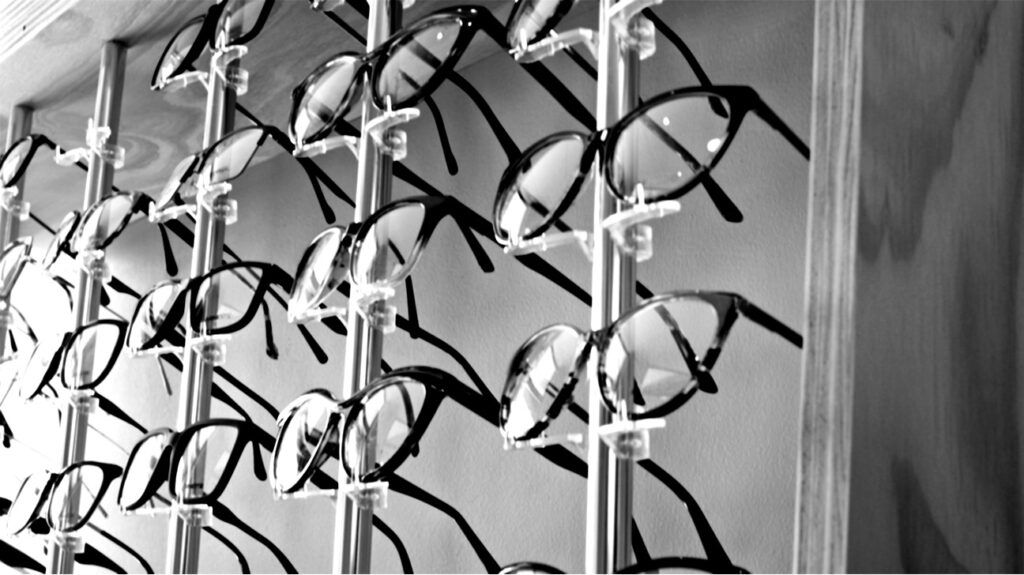Prism glasses bend and redirect light before it meets the eye. They may help improve double vision for people with an eye misalignment or condition.
If an eye doctor suspects someone may benefit from prism glasses, they may suggest trying temporary press-on prisms or prescribe glasses with prisms in the lenses themselves.
People need to contact an eye doctor if they experience eye changes, such as double vision, which may require prism glasses. An eye doctor can help someone determine the cause of their symptoms and whether prism glasses are suitable.

Prism glasses use refraction, which means they bend light to change its direction before it meets the eye.
If someone has double vision, prism glasses can redirect where light meets the eye, allowing the individual’s brain to fuse the two images into a single image.
When prisms are part of the lens, prism glasses will typically look like any other glasses, although the lens on one side may be thicker. Thicker frames may hide this change in lens thickness.
Some eye doctors may suggest a press-on sticker prism called a Fresnel prism. This is temporary but may be a useful way to test whether prisms can help someone’s vision. Fresnel prisms may be visible on the lens.
An eye doctor may suggest prism glasses when someone has an eye misalignment, which may cause double vision. Conditions that may cause an eye misalignment include:
- eye muscle problems, including:
- brain-related issues, such as:
- nerve-related issues, such as:
They
Although prism glasses
- headache
- nausea and vomiting
- eyestrain
- confusion
- double vision
- worsening vision
Side effects may be due to an old or incorrect prescription or a misalignment of lenses when fitting the prisms.
People need to speak with an eye doctor if they experience eye changes such as double vision because prism glasses may be necessary.
Individuals need an in-person eye exam to ensure the glasses are the correct prescription. Using an incorrect or outdated prescription
The eye exam may also involve the following additional tests:
- Hirschberg test: An eye doctor aims a penlight into each eye to check for strabismus. If the light’s reflection is off-center, a person may have strabismus.
- Krimsky test: An eye doctor instructs someone to look at a penlight while holding different prisms in front of their eye. The correct prism measurement will bring the light’s reflection to the center of the eye.
- Cover tests: There are various types of cover tests. For example, an eye doctor covers one of the person’s eyes and looks for movement in the uncovered eye.
If an eye doctor decides that someone may need prisms, they
It is worth noting that Fresnel prisms may cause a slight reduction in image quality due to optical imperfections, and this should not occur in permanent prism glasses.
If Fresnel prisms lead to an improvement, the eye doctor will prescribe someone glasses with prisms ground directly into the lenses.
How does someone know if they need prism glasses?
Prism glasses
What is the purpose of prism glasses?
Prism glasses redirect and bend light before it meets the eye, which may resolve some visual problems, such as double vision.
Are glasses with prism better than those without?
Prism glasses are not necessarily better than glasses without prism. However, they may be suitable for improving certain visual problems, such as double vision due to an eye misalignment.
Prism glasses may help improve double vision due to an eye misalignment or other eye conditions. Prisms bend light before it meets the eye, redirecting it to the right place on someone’s retina.
Eye doctors may suggest temporary stick-on prisms before prescribing prism glasses. This can help someone understand if prisms will improve their symptoms.
Undergoing an eye exam before getting prism glasses is vital, as the wrong prescription or misaligned lenses can lead to side effects, including headache, worsening vision, or nausea.
